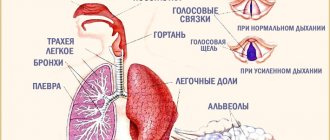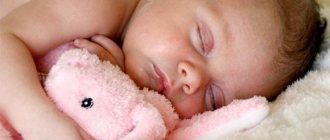A pacifier in a baby’s mouth is both a firmly entrenched stereotype in the modern world and the subject of endless debate about whether it is necessary to move from natural to convenient. That’s why it can be so difficult for young parents to understand whether they need to introduce their baby to this accessory or not. For many parents, this is a lifesaver; others do not accept its use at all. Why is this happening? Let's figure it out.
Does a newborn even need a pacifier?
Sucking is one of the first reflexes of a baby just born. By interacting with his mother’s breast, he thus obtains food and comfort, helps himself to fall asleep and satisfies the need for communication. But sometimes the breast, for various reasons, is out of reach for the baby, and then it enters the arena - the pacifier. Whether it is worth teaching a child to suck a pacifier is up to the parents to decide. Well, we will tell you about the pros and cons of this accessory, and how to make its use as comfortable and safe as possible.
When to accustom a baby to a pacifier?
To answer this question, you must first find out how the mother plans to feed the baby. If for some reason a newborn is bottle-fed and it is not possible to put him to the breast, in this case you can start giving him a pacifier as early as possible. For those mothers who choose breastfeeding, we recommend postponing introduction to a pacifier for at least the first 4 weeks, while lactation is established and the baby’s correct latch on the breast is formed.
We figured it out when to give. What exactly is the benefit of using this wonderful device? Let's look at the pros and cons of nipples in detail so that every mother can draw conclusions for herself. Among the positive effects of pacifiers, doctors and parents most often highlight the following:
The benefits of pacifiers
- The pacifier helps satisfy the baby's sucking reflex. This is especially necessary for children who eat according to a schedule, and not on demand, or are bottle-fed;
- Sucking a pacifier calms the baby. Your baby falls asleep faster and more soundly, copes with his baby troubles more easily, and stops whining when your lifesaver - a pacifier - is in his mouth;
- Mom has free time while the little one is busy with an important task - sucking a pacifier.
Disadvantages of using pacifiers
- Pacifiers can ruin a child’s bite, crook his teeth, and it is also very difficult to wean a child off them later. You can immediately recognize such children by their slightly open mouth in the absence of a runny nose. This can lead to frequent colds (read the current article How to protect your child from colds?>>>);
- But much more serious is the damage caused by pacifiers to breastfeeding:
- Reduced lactation;
A decrease in lactation occurs due to the fact that the newborn receives a pacifier instead of food, or he sucked it before eating. A baby's facial muscles get tired quickly. Accordingly, when the newborn is put to the breast, he will eat much less than he should. But not because he was full, but because he was tired.
In both cases, the woman’s body receives a signal that less milk is needed and, naturally, reduces its production. Information from the article How to increase lactation>>> will help you cope with this problem.
- Breast refusal;
Whatever the shape of the nipple, it still does not correspond to a woman's real nipple. The process of sucking a pacifier and a breast is different; the newborn begins to get confused about what to do, worries and, as a result, may even abandon the labor-intensive process of extracting milk.
Especially if an insecure mother starts feeding with artificial formula, believing speculation about “poor quality of milk” or “the child’s reluctance to breastfeed.”
- Incorrect application;
Another feature of improper attachment to the breast, formed by the nipple, is the swallowing of air during feeding. And this is the reason for the seething in the tummy, anxiety and cries of the baby. Pay attention to the article on the website: Correct attachment of the baby to the breast>>>.
Harm from pacifiers
- Pacifiers interfere with full breastfeeding, especially if they started to be used in the first month and a half of the child’s life. The baby begins to latch onto the breast differently and may hurt the mother and suck harder, thereby sometimes causing injury to the nipple. As a result, the mother not only experiences pain, but also risks that her milk production will decrease (due to the fact that the baby will suckle less, preferring the nipple).
- Remember - a pacifier cannot replace a little mother! Constantly calming your child with a pacifier, you can disrupt the psycho-emotional contact between you;
- If a child sucks a pacifier for a very long time, his bite may change, and this can subsequently have a negative impact on the growth of teeth and the pronunciation of certain sounds;
- Nipples can be allergenic; their rims rub the chin and lips;
- If you do not constantly take care of the antibacterial treatment of the pacifier (sterilize, boil, store in a clean, tightly closed container), then pathogenic bacteria and microbes can enter the baby’s oral cavity and cause a number of serious diseases of the oral cavity and gastrointestinal tract.
The nipple during breastfeeding is a subject of controversy
The need for a pacifier during breastfeeding is a hot topic of discussion. Mothers never tire of arguing about whether they should give a pacifier to their baby. Pediatricians also have different opinions on this matter. Some doctors promote the use of a maternity substitute, while others recommend abandoning it.
The benefits and harms of a pacifier are assessed according to several criteria. Only a woman can decide whether to give a pacifier or not. First you need to know about the pros and cons.
Arguments for
The benefits of silicone devices for the modern mother are obvious. If you divide women into two groups, then there will be more of those who are in favor. Mothers who use silicone and latex accessories give the following arguments:
- Sucking helps you calm down and fall asleep. This makes life easier because it eliminates long-term motion sickness.
- Mommy substitute increases free time. There is no need to lie with the baby for a long time and give the breast to satisfy the sucking reflex.
- A silicone device helps on the street when a newborn cries and asks for a breast. It distracts the baby and allows you to buy time to return home or find a secluded place for feeding.
- Using a pacifier you can calm your baby down during unpleasant procedures. If the baby cries while changing clothes, then she can easily correct this situation.
- The child is already full. After feeding, he needs to fall asleep, but the newborn does not let his mother go. To prevent the baby from sucking on the breast “in vain,” women give a pacifier.
- The pacifier improves baby's sleep. The baby can suck and sleep for a long time. This accessory is especially appreciated by women who do not like to wake up for night feedings.
A pacifier for a baby can actually be useful in some situations. It will be needed if the mother is away and the child will be with the father or another family member for a long time. You will also need a pacifier if a woman is hospitalized or, for health reasons, is temporarily forced to interrupt breastfeeding.
Once accustomed to a pacifier, it can be difficult to wean off this device. Therefore, mothers who decide to buy a pacifier for a newborn should be aware of the seriousness of their action and its possible consequences.
Arguments against: why it harms breastfeeding
If you ask pediatricians whether a newborn needs a pacifier when breastfeeding, you may hear different answers. Breastfeeding consultants agree that a pacifier is not needed for newborns. Moreover, it can harm lactation. Experts support their categorical opinion with arguments.
- Breastfeeding is a difficult process. Proper breast latch is the basis for successful lactation. Mom's sucking is different from baby's pacifier sucking. To get milk, the baby has to open his mouth wide and actively work with his jaw. When sucking a pacifier, the child does not open his mouth so wide and mainly works with his tongue. Therefore, it can be argued that breastfeeding and pacifier sucking are incompatible processes.
- By accustoming their baby to the pacifier, mothers reach the finish line, which leads to abandonment of breastfeeding. Mother's milk comes at the baby's request. When the baby sucks latex instead of the mother, the demand for food decreases. This leads to a woman's decreased milk production. A common mistake mothers make in this case is supplemental feeding. If the situation is not corrected in time, then the transition from GW to IV is inevitable.
- Prolonged sucking of a pacifier leads to the formation of an incorrect bite in a child. Breastfeeding promotes the proper development of the maxillofacial muscles. In IV, children are more likely to experience underdevelopment of the upper or lower jaw. In the future, this will cause aesthetic problems and physiological suffering.
- The pacifier is a source of infection. It's good if she is sterilized. However, you can often see the accessory dangling on a chain and rubbing against the baby’s clothes. Dust, hairs, particles of clothing, microbes, and viruses accumulate on the surface of a rubber device. Women often lick a dropped pacifier and offer it to the baby. Together with saliva, they transmit bacteria to the child. If you give up the pacifier, you can significantly reduce the risk of oral and respiratory tract infections.
- Using a pacifier leads to frustration in the child. GW provides a deep psychological and emotional connection between the baby and his mother. A pacifier does not allow it to fully develop. During puberty and at an older age, this leads to the appearance of complexes.
- Latex contains substances that cause allergic reactions in children. Silicone in this regard is considered a higher quality material. Most pacifier manufacturers use this. However, one cannot be sure that tomorrow scientists will not find harmful substances in the composition of silicone.
Types of pacifiers
Modern pacifiers are quite varied in size, shape, and material.
Pacifier sizes:
- For the little ones (from 0 to 6 months);
- From 6 to 18 months;
- Over 18 months.
Pacifiers are made from three types of materials: latex, rubber and silicone. In recent years, rubber pacifiers have been very rare - this material is already becoming a thing of the past.
Latex nipples are very elastic and soft, but have many disadvantages - a specific smell and taste, poor resistance to temperature changes (they can become deformed during sterilization or boiling). They cannot be used for more than one month.
Pacifiers made of silicone are more durable, do not deteriorate during boiling, and have no taste or smell. But there is also a significant drawback - they are quite hard and, if chewed excessively, can cause tooth deformation. Only your baby can decide which pacifier to choose.
Pacifiers come in round, oval and orthopedic shapes. Orthopedic nipples have a beveled tip and a curved base - this design is a bit like a female breast nipple. However, there is no evidence yet that the orthopedic pacifier is any better than the others.
Important Notes
- If, for any reason, you decide to use a pacifier, be sure to choose it in accordance with the age of the child, of the correct shape, without defects or loss of integrity;
- Be sure to consider the composition of the materials from which it is made;
- You can buy a pacifier only in pharmacies and certified stores;
- Be sure to keep the pacifier perfectly clean and sterile. Boil it. And before use, store in a sterile container, otherwise you risk giving your newborn a host of infectious diseases.
There are no trifles in caring for a newborn. Of course, you decide for yourself whether to use a pacifier or not. But, whatever your choice, never forget about the health and well-being of the baby.
How to choose a pacifier?
Today, manufacturers have come up with many varieties of pacifiers, for example, with a backlight (to make it easier for mother to find it in a dark room) or with a hole through which the baby can be given medicine.
In addition to the material of the nipple itself, be sure to pay attention to what kind of base it has. It can be a traditional round or oval shape, or it can have a curved top part - a cutout for the spout, which is much more convenient.
In addition, the base of the pacifier should have holes on both sides to allow air to enter and prevent irritation around the baby's lips. For older children, they often buy pacifiers on chains - they are convenient to attach to children's clothing so that such an important accessory does not get lost during walks. Check the pacifier regularly for tears or cracks.
Doctors advise changing pacifiers every month to a month and a half, regardless of the degree of wear and tear.
What conclusion can be drawn from all of the above?
As you understand, a pacifier is both beneficial and harmful to the baby in equal measure. Whether their newborn needs a pacifier is up to the parents to decide, depending on the specific needs of the baby. It can definitely be a help and ease the difficult work of caring for a child, but it must be used wisely. If a child is naughty, sometimes you can try to change the position in which the child is, try to distract him or involve him in some kind of game. Do not use a pacifier as first aid! Do not forget that this is not a magic cure for all vagaries, but just an auxiliary accessory.
Should you accustom your baby to a pacifier?
Only you can decide this. Your child himself will tell you whether he can do without a pacifier or whether he needs one. First, find out what is bothering him and why the child is crying - perhaps he is hungry or thirsty.
If the pacifier is chosen correctly and it calms the baby, then give it, but try to do this in case of emergency. If you are already exhausted, and your capricious one just can’t sleep, give him his favorite pacifier, this way you will save nerve cells for both yourself and the little one.
In the end, when a baby sucks calmly and serenely, he develops a strong nervous system, and this is a clear benefit.
The main rule
Know! It is necessary to remember and religiously observe the first and most important rule: Before grabbing the pacifier, you need to find out the reason for the baby's crying.
- A cry is the only way for a newborn to communicate that something is wrong. He cannot yet say: “Mom, I want to eat,” or “I have a headache,” “I’m cold,” or “I’m hot,” or simply, “I suddenly feel lonely and scared in this big world, Mom!” (by the way, you can find out when your baby starts talking from the article When does a child start talking?>>>);
- For nine months the baby lived inside you. I rejoiced and worried with you, walked, slept and ate with you. And now the newborn has to live independently. And he hopes that the one who took care of him for so long is still ready to help him, hopes that she will hear and understand him.
It may take time for you to learn to guess what the baby needs based on external signs. But if you don’t make an effort, you may never learn this.
After studying the materials posted at the link, you will learn to understand your baby, understand the main needs of the baby and learn how to gently and properly care for your baby. Online course Happy Motherhood>>>.
Also, from the course you will learn:
- How to bathe a child so that he does not cry;
- Learn how to properly carry a baby in your arms, without harm to your back and his back;
- You will begin to rock your newborn correctly to prevent microdamage to the vertebrae.
- Turning to his mother, the baby hopes that the answer to his cry will be the mother, and not a soulless thing. Well, a newborn does not have any abstract sucking reflex. He needs exactly his mother’s breast, her milk, her warmth, her familiar sound of heartbeat, which he heard all the months before his birth;
- Some of you may have noticed that the baby does not always eat when he nurses. It happens that he simply holds the breast in his mouth, but immediately begins to suck more actively when he tries to remove it. This means that the newborn is experiencing some psychological discomfort and seeks protection and reassurance in his mother’s arms. After all, you can’t unfasten your chest and leave.
By giving a child a pacifier at this moment, we are simply deceiving him and leaving him alone with his problems. Nothing calms a baby better than a mother's hug.
Modern neurologists have come to the conclusion that constant use of a pacifier leads to a lack of communication between mother and child, which negatively affects its development and psychological stability. This lays the foundation for future problems in the interaction of an adult with the environment: his distrust of family, inability to build relationships, the choice of bad habits as a means of relieving stress.
How to part with a pacifier?
You should start weaning your child off the pacifier from the age of six months, when his first teeth appear. By one and a half to two years, the child’s sucking reflex completely fades away.
What can be done to ensure that problems with using a pacifier do not arise? Up to 2-3 months, a pacifier can be offered to a child only in the most extreme cases: if the baby is very excited, overtired, or if his sucking reflex is too strong. You should not offer a pacifier to your baby when he is not fussing.










